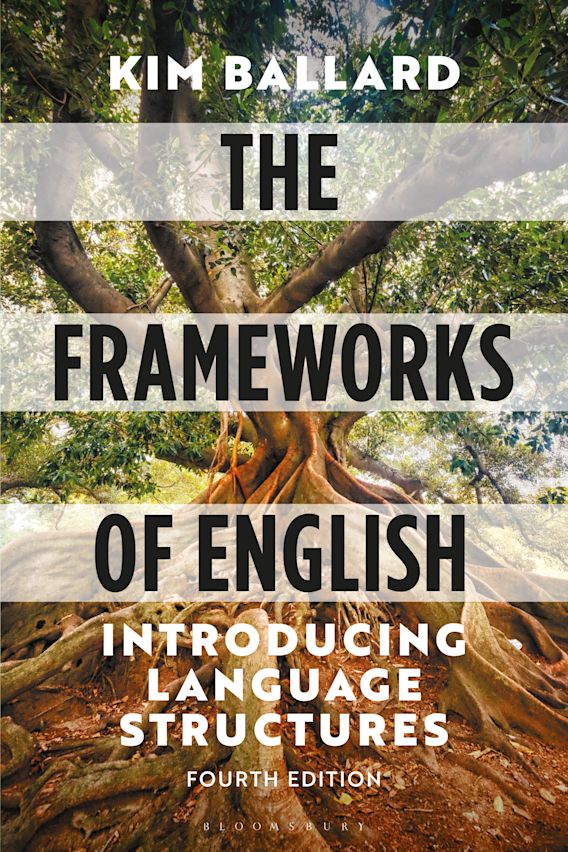



johndoe@gmail.com
Are you sure you want to reset the form?
Your mail has been sent successfully
Are you sure you want to remove the alert?
Your session is about to expire! You will be signed out in
Do you wish to stay signed in?
Question 1 (Consolidate)
We saw in Section 7.4 the different structures that can be used to form questions. For each of the examples, describe the strategy used to construct the question:
| 1 | Are you ready for your holiday |
| 2 | Brian has asked whether you’d like to go birdwatching with him |
| 3 | It was a great holiday, wasn’t it |
| 4 | Must I really go to the dentist |
| 5 | Did the children enjoy the pantomime |
| 6 | Where have Karen and Brian been for their holiday |
| 7 | Which tube station are you meeting Karen at
|
Answer
| 1 | interrogative (yes-no question) with subject-verb inversion |
| 2 | complex sentence with embedded (yes-no) interrogative |
| 3 | tag question (with negative tag – expecting a positive response) |
| 4 | interrogative (yes-no question) with subject-operator inversion |
| 5 | interrogative (yes-no question) with subject-operator inversion (auxiliary do added) |
| 6 | interrogative (wh-question) with fronted adverbial |
| 7 | interrogative (wh-question) with fronted NP with wh-determiner (The preposition at remains in its declarative position in the example, but could have been fronted to give the more formal At which tube station…) |
Question 2 (Explore)
We also saw in Section 7.4 the typical way in which tag questions are constructed. However, each of the following groups of examples illustrate an alternative strategy. Identify these structural differences and comment on any effect this has on meaning.
| Group 1 | The story took place in Paris, wasn’t it They mentioned that the river is flooding, isn’t it You went on holiday with Karen, wasn’t it |
| Group 2 | He’s given up his job, has he You’re going to the party, are you She won, did she |
| Group 3 | Nobody has arrived yet, have they Nothing has been finished, has it No animals were hurt, were they |
| Group 4 | What a great idea, isn’t it Help me with the dinner, would you Help me with the dinner, can’t you
|
Answer/discussion
In Group 1, the question tag refers not to the sentence subject but to some other element (Paris, that the river is flooding, Karen). Instead of constructing the tag based on the main verb, the appropriate form of be is used. In all three examples, the tag enables the speaker to check the accuracy of just part of the information the sentence conveys.
In Group 2, both the declarative sentence and the question tag are affirmative. This has the effect of making the questioner sound surprised or disapproving.
In Group 3, the subject elements are either negative pronouns (nobody, nothing) or contain a negative determiner (no animals). This is the reason why the tag is affirmative.
In Group 4, the tagged sentences are not declarative but either exclamative or imperative. The auxiliary used in the tag attached to the imperatives is extracted from an implied interrogative – Would you / Can you help me with the dinner, for example.
Question 3 (Explore)
Using the following two exchanges as your starting point, explain how declarative sentences (like those uttered by participant B) can function as questions:
| Exchange 1 | A: | I’ve just had a message from Doctor Who – you know, the television time traveller |
| B: | You’ve had a message from Doctor Who?
| |
| Exchange 2 | A: | I’ve just had a message from Doctor (unclear mumbling) about my appointment next week |
| B: | You’ve had a message from Doctor who?
|
Answer/discussion
Although the two B examples appear to be the same, the similarity is superficial. In Exchange 1, B effectively repeats what A has said (to express surprise or disbelief), changing only from first to second person. In speech, the question function would be signalled by the use of rising intonation towards the end of the utterance. (See Sections 11.7–11.10.) In Exchange 2, A hasn’t said the name of the doctor clearly and so B requests clarification by replacing the doctor’s name with the wh-pronoun who. This will also affect the intonation pattern of the sentence, but differently from the Exchange 1 example. (Questions like these, which repeat all or part of a preceding statement, are known as echo-questions.)
Question 4 (Explore)
We saw in Section 7.9 that interrogatives can function as a clause element within a complex sentence. How does the structure differ from a main clause interrogative, as given below?
| within a complex sentence | as a main clause interrogative | |
| 1 | (Clare wondered) whether Gregory was back | Is Gregory back |
| 2 | (Clare asked) if she could use the phone | Can/could I use the phone |
| 3 | (Clare asked) who (had) phoned | Who phoned |
| 4 | (Clare wondered) where Gregory had gone | Where has Gregory gone |
| 5 | (Clare inquired) what time the train left | What time does/did the train leave
|
Answer/discussion
In a main clause interrogative, yes-no questions and wh-questions where the wh-element is anything other than the subject require an inversion of the verb (or auxiliary) and the subject. This doesn’t occur when the interrogative is a subordinate clause. (You may also have noticed that a shift in tense/aspect may occur in the subordinate interrogative, particularly in relation to the tense of the main clause.)

.